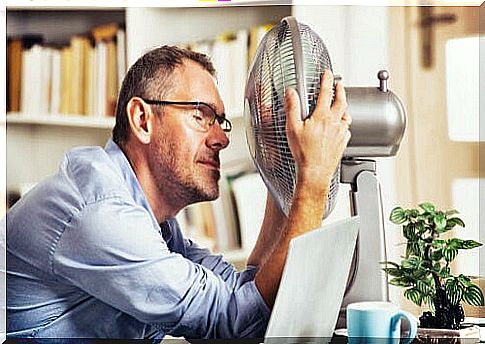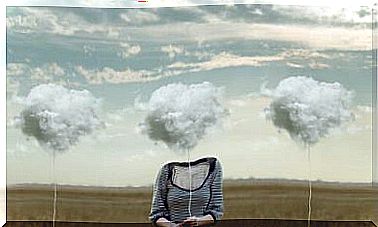What Is Heat Stress?

The many sick leave derived from heat stress are a consequence. Not only in Spain, cities like Berlin or Paris have reached temperatures of 42ºC. We have had the hottest July in decades, but this has not been anecdotal. The prediction is that the global mean temperature will continue to rise.
Therefore, this change in the temperature of the environment will affect our body temperature, affecting what we know as heat stress. Heat stress is the accumulation of heat in the body that prevents us from maintaining a normal body temperature.
A healthy human body maintains a constant body temperature of approximately 37 ° C. A fluctuation of less than 1 ° C, depending on the time of day, the level of physical activity is acceptable by the human body. In contrast, a change of more than 1 ° C in body temperature occurs only in case of illness or when the body cannot withstand environmental conditions, such as extreme heat.
Heat stress: our body reacts to the temperature of the environment
Heat stress is a build-up of heat in the body that prevents the worker from maintaining a normal body temperature. A worker who cannot cool his body through perspiration is exposed to serious heat disorders. Working in high temperatures poses a health and safety risk and can lead to fatal heat stroke.
As the ambient temperature increases, the body temperature tends to increase. The body goes into reaction mode by increasing blood flow and making the sweat glands work. Therefore, the body increases the rate at which it loses heat to reduce its heat load. In very severe heat, heat gain exceeds loss and increases body temperature, posing health risks.

Factors that can cause heat stress
- High temperatures.
- High humidity.
- A physically intense job.
- Lack of habit at work in hot conditions.
- Insufficient breaks.
- Dehydration
- Bad work conditions.
- Inadequate ventilation.
- Work in direct sunlight and insufficient shade.
- Work near heat-emitting appliances (divers, cleaners, etc.).
To avoid thermal stress, every company must adopt the following measures:
- Ensure adequate ventilation.
- Provide fans to cool the air, unless the temperature reaches more than 35 degrees Celsius, in which case the fans are more harmful than helpful.
- Provide shady areas for outdoor work.
- Have enough fresh water for workers.
- Design additional breaks and short work cycles.
- Do physically demanding work in the coldest hours.
- Turn off heat generating devices when not in use.
- Do not perform physically demanding work by pregnant workers.
- Train workers to recognize and prevent heat stress.
- Call a doctor if a worker feels sick, dizzy, nauseated, irritated skin, weakness, or sudden vision problems.
- Protect or isolate hot surfaces in workplaces.
- Provide air conditioners and fans.
- Implement a gradual acclimatization process for all employees working in high temperature environments.
Effects of heat stress
Miliary eruptions are one of the most common effects of heat stress. They are red bumps on the skin, accompanied by tingling. Miliary rashes occur when excessive sweating cannot evaporate. Heat-induced irritation generally subsides when the person moves to a cooler place. Miliary eruptions can be prevented by wearing clothing that promotes the evacuation of perspiration.
Heat fatigue often occurs when you are not sufficiently acclimatized to work at high temperatures. His reactions are slower and his concentration becomes difficult. You must remove yourself from the warm environment to prevent your condition from worsening.
Heat cramps generally occur after strenuous physical exertion in a hot environment. These cramps are caused by dehydration. When working at high temperatures, we should think about drinking water every fifteen or twenty minutes. Avoid alcohol, tea, coffee and soft drinks. Heat exhaustion causes headaches, nausea, dizziness, blurred vision, weakness, and excessive thirst.

Heat stroke or syncope
Heat syncope is a very serious condition that can lead to fainting or loss of consciousness. Heat syncope is caused by a lack of oxygen in the brain and blood flows to the ends of the body. It happens by giving little or no advance notice.
Heat stroke occurs when body temperature reaches dangerous levels, due to a failure of the body’s internal regulatory system. In case of heat stroke, medical intervention is urgently needed.
Symptoms of heat stroke include confusion, irrational behavior, loss of consciousness, seizures, hot and dry skin, lack of sweating (usually), and abnormally high body temperature.









